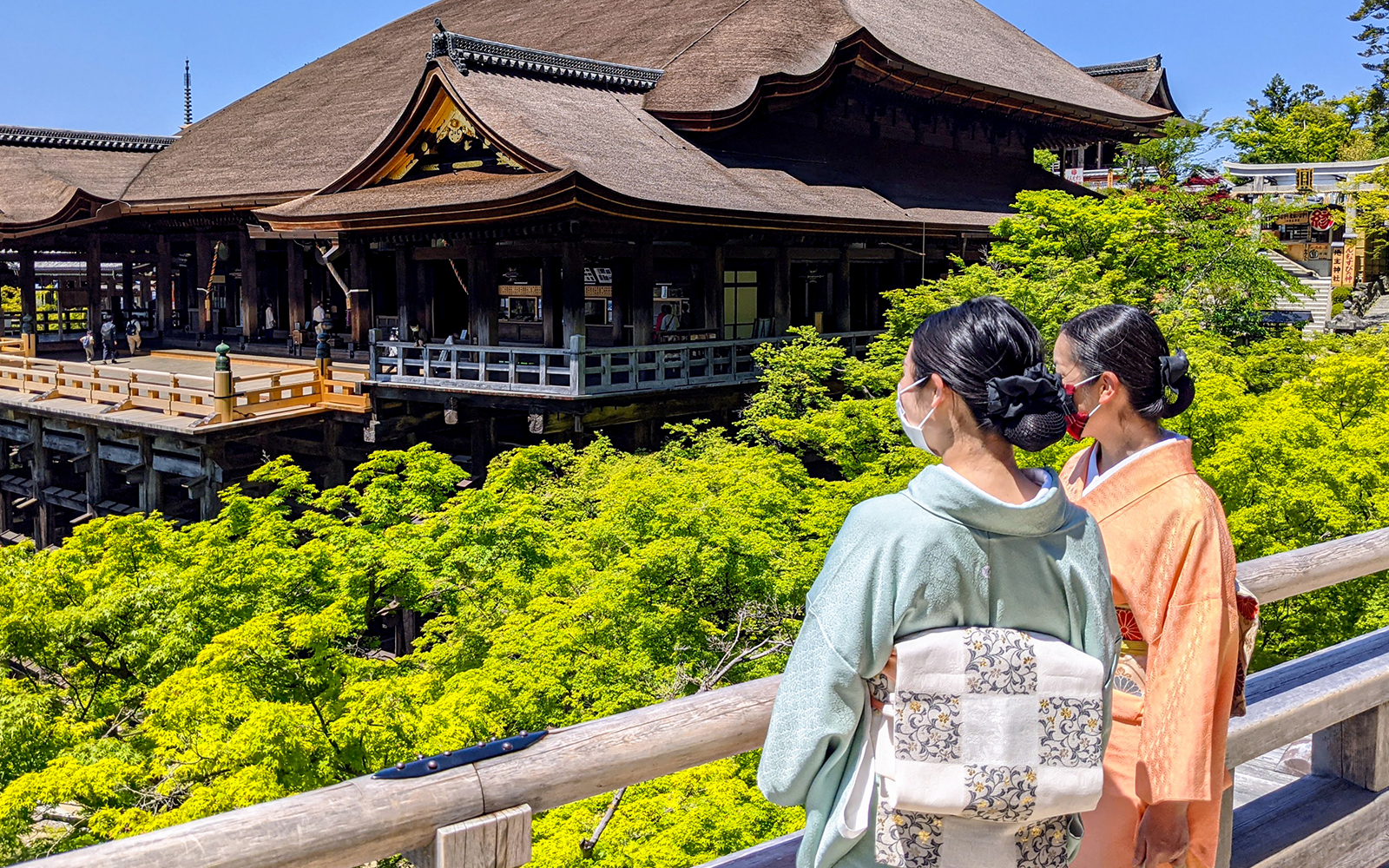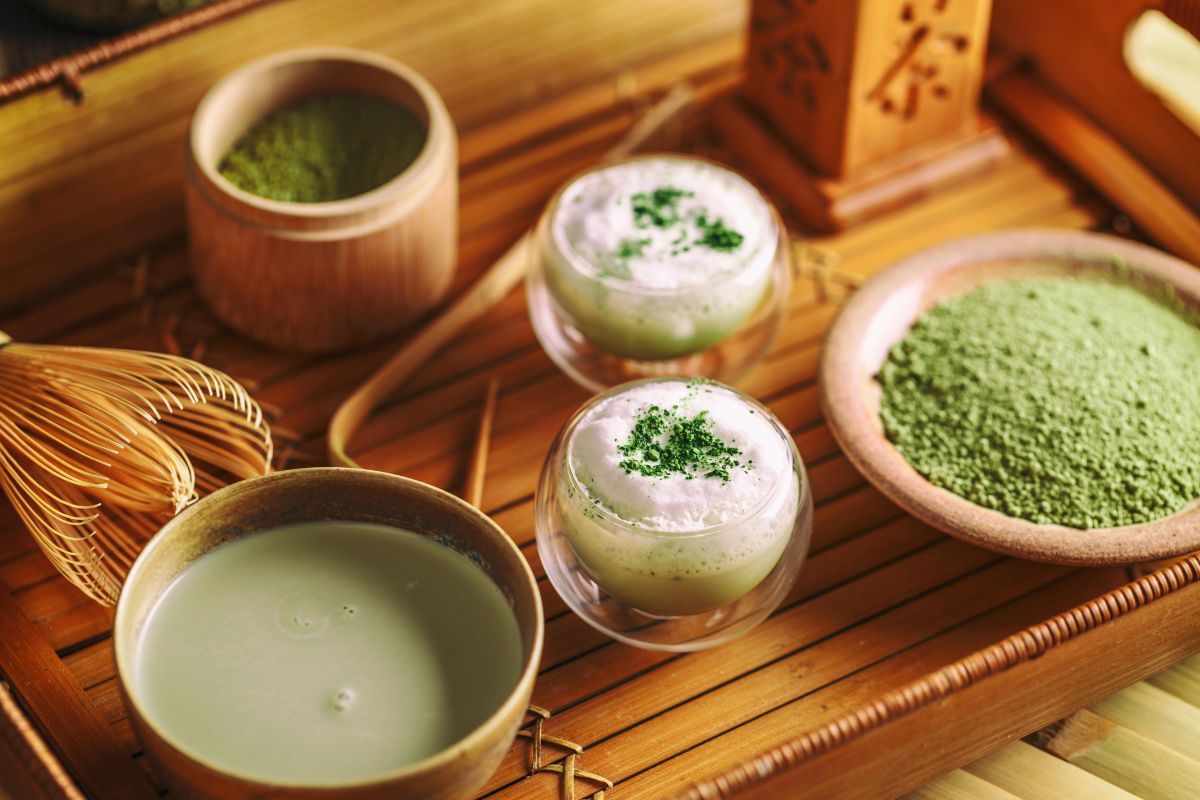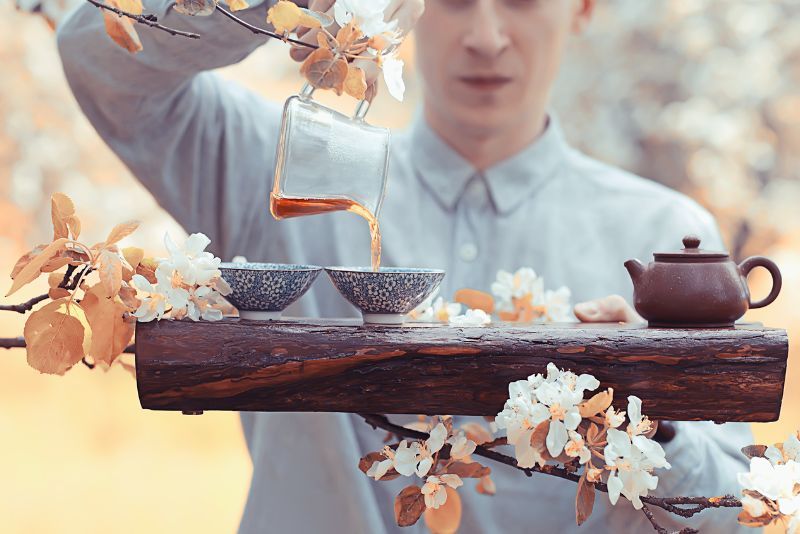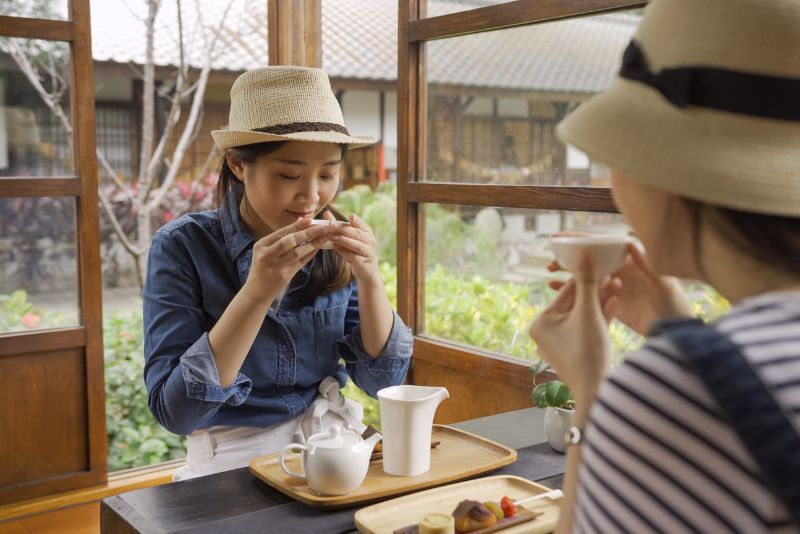Tea Ceremonies in Kyoto
One of the most traditional and authentic Japanese customs is tea drinking. First brought to the nation by monks in the 8th century, the Japanese have perfected the art of brewing delicious matcha over the last 1,300 years.
The best way to learn the history and etiquette of this practice is through a tea ceremony in Kyoto. You'll be paired with a highly-educated tea master, who will teach you all about the calming beverage, while seated in a historic tea house.
One of the most traditional and authentic Japanese customs is tea drinking. First brought to the nation by monks in the 8th century, the Japanese have perfected the art of brewing delicious matcha over the last 1,300 years.
The best way to learn the history and etiquette of this practice is through a tea ceremony in Kyoto. You'll be paired with a highly-educated tea master, who will teach you all about the calming beverage, while seated in a historic tea house.

(0/24) checking Musement...
One of the most traditional and authentic Japanese customs is tea drinking. First brought to the nation by monks in the 8th century, the Japanese have perfected the art of brewing delicious matcha over the last 1,300 years.
The best way to learn the history and etiquette of this practice is through a tea ceremony in Kyoto. You'll be paired with a highly-educated tea master, who will teach you all about the calming beverage, while seated in a historic tea house.

Here's all you need to know about tea ceremonies, one of the most traditional gastronomic experiences in Kyoto.
What are the best tea ceremonies in Kyoto?
Tea ceremony at Jotokuji Temple
If you want to get a feel for traditional Japanese culture, opt for a tour that takes place in one of the city's numerous Buddhist temples.
Upon entering Jotokuji Temple, you'll have the opportunity to explore its grounds and admire its Japanese architecture. Then, you'll move on to the Grand Tearoom where you'll participate in a purification ritual to cleanse both your body and spirit from sins, and pollution.
Alongside your tea master, you'll sip local matcha and learn about the spiritual meaning of this type of ceremony. Discover the Zen philosophy behind tea and perfect your technique of drinking it like a local.
Private tea ceremony in Kyoto

Those who are seeking a more personal experience should consider selecting a private tea ceremony in Kyoto.
In your own private room, you'll watch as your guide brews tea the traditional way that the Japanese have been doing for centuries. Explore the foundations of tea customs in this Asian country, where it was originally imported by priests in the 8th century.
Immerse yourself in the tea drinking experience as you pick out the earthy, nutty and savory flavors in matcha, and enjoy a sweet Japanese snack to accompany it while you listen to your fascinating tea master in a one-on-one setting.
Local home visit tea ceremony with qualified sensei
If you're itching to see inside a local Japanese home, you can do so on this small-group tour.
On this alternative Kyoto tea tour, you'll visit the home of a respected tea master. Your ceremony will take place in a tranquil room where you can admire artworks and floral arrangements before exploring a side of tea you never knew existed.
You'll learn how to prepare matcha for yourself — a skill you can take home with you — and those who are uncomfortable on a traditional tatami mat will be accommodated with alternative seating arrangements.
Tea ceremony wearing a kimono in Kyoto
Those who are short on time can combine two of the most authentic Japanese experiences during this ceremony.
Begin your tea drinking experience by selecting a silky kimono from a selection of exquisitely colorful gowns. A guide will help you to don your attire properly and ladies will have the opportunity to be pampered in true Japanese fashion, as they are beautified in a whirlwind of lotions and powders to achieve perfect hair and makeup. You'll then discover tea drinking etiquette while you watch your master expertly brew and pour vibrant green tea for you to taste.
Which places are visited?

Tea ceremonies in Kyoto take place at a variety of different tea houses and temples across the city. Tea drinking is deeply rooted in Zen philosophy and is present in Buddhist customs.
The act of drinking green tea is used to aid meditation practices by clearing the mind and curbing hunger. Formal tea ceremonies began in the country after Japanese monks were inspired by Chinese protocols and established them once they returned home.
Japanese tea rooms are known as "chashitsu" and are specially designed for these ceremonies. The wooden buildings are typically located in public places including temples, parks and museums.
However, many Japanese residents install chashitsus in the gardens of their own family compounds. It is believed that the first chashitsu was established in Kyoto by the shogun Ashikaga Yoshimasa in the 15th century.
Tea tasting ceremonies in Kyoto always use matcha as their beverage of choice, which is a powdered green tea. Matcha is believed by the Buddhist community to be highly beneficial to both the mind and body, and is thought to make the drinker's life more complete.
How much do tea ceremonies in Kyoto cost?
Tea ceremonies in Kyoto range significantly in price, depending on the level of personalization you prefer. Those that take place at Jotokuji Temple cost just over US$20 per person.
You'll pay around US$60 per person for a tea ceremony at a local tea master's home, and tours that enable you to don a kimono also cost the same. Alternatively, a private tea ceremony costs approximately US$70 each.
What is included?
Tea ceremonies in Kyoto always include the services of a qualified master who will show you the intricacies of the tea-making experience and teach you the etiquette of tea drinking in Japan.
You'll be provided with a cup of traditional matcha and many excursions also include a Japanese sweet treat, such as wagashi, which is made with sweet azuki bean paste.
In some cases, your tea ceremony may also include a booklet detailing the customs behind the practice for you to take home and show your loved ones.
Where does it start?
Kyoto tea drinking experiences usually begin at the tea house or temple they take place in. You'll be provided with the address ahead of time so that you can plan your route.
Kyoto has a reliable public transportation network with an array of buses, trains and metro services to deliver you where you need to go.
How long does it last?
Typically, tea ceremonies in Kyoto last around an hour. This makes it an easy activity to slot into your itinerary and provides a lot of cultural education in a short space of time.
When is the best time for a tea ceremony in Kyoto?
You can participate in a Kyoto tea ceremony at any time of day. Most tours have several time slots to choose from, which means you're bound to find one that suits your schedule.
You may wish to plan your visit to Kyoto to coincide with the annual appearance of the cherry blossom, which covers the city in a cloud of pink between mid-March and mid-April. However, you should note that this is the busiest season for tourism in the city.
If you'd rather have a less crowded experience, book your trip for February or early March.
Travel tips
- Ensure you take socks with you as you may not be permitted into the tea room without them.
- Ask before taking photos or videos as some tours prohibit these while others are happy for you to commemorate your experience like this.
- Tipping is not necessary in Japan and may even cause offense, so keep your wallet away during your excursion, and appreciate your guide with a simple "arigato gozaimasu."
- If your tea ceremony takes place in a temple, remember to remove your hat and sunglasses to show respect.

